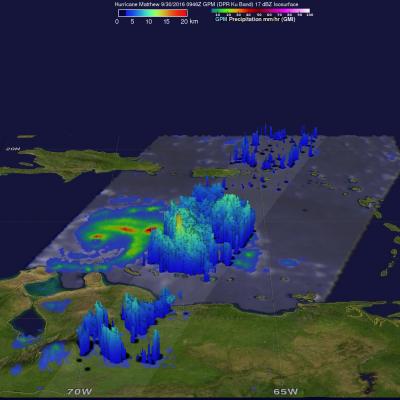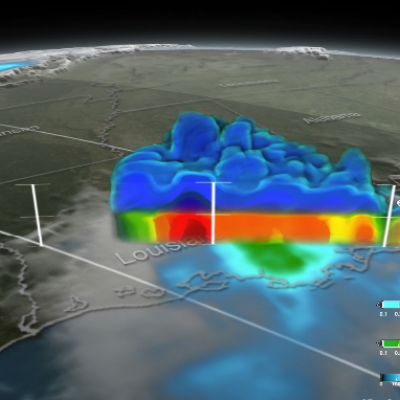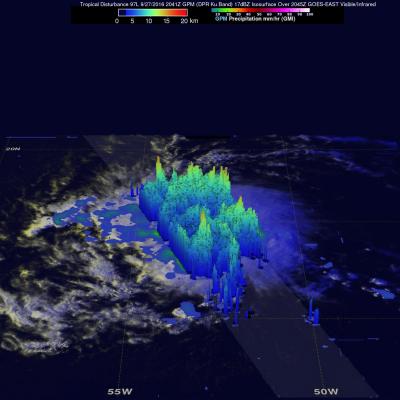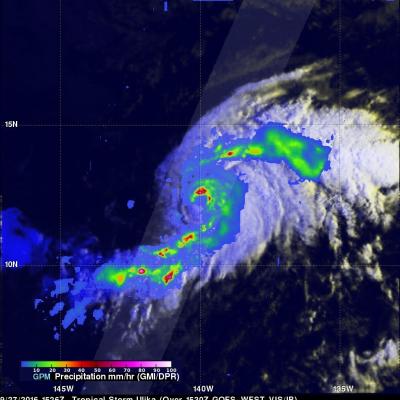Intensifying Typhoon Chaba Examined By GPM
As Typhoon Chaba moved to the western Pacific Ocean south of Okinawa over the past few days wind speeds have increased to 115 kts (132 mph).The GPM core observatory satellite flew directly above Chaba’s eye on October 2, 2016 at 2026 UTC. GPM’s Microwave Imager (GMI) and Dual-Frequency Precipitation Radar (DPR) instruments showed that Chaba was dropping extremely heavy precipitation. Some precipitation in the typhoon’s small eye wall was measured by GPM’s radar falling at a rate of more than 234 mm (9,2 inches) per hour. GPM’s Radar (DPR Ku Band) data were used to show the 3-D shape of






